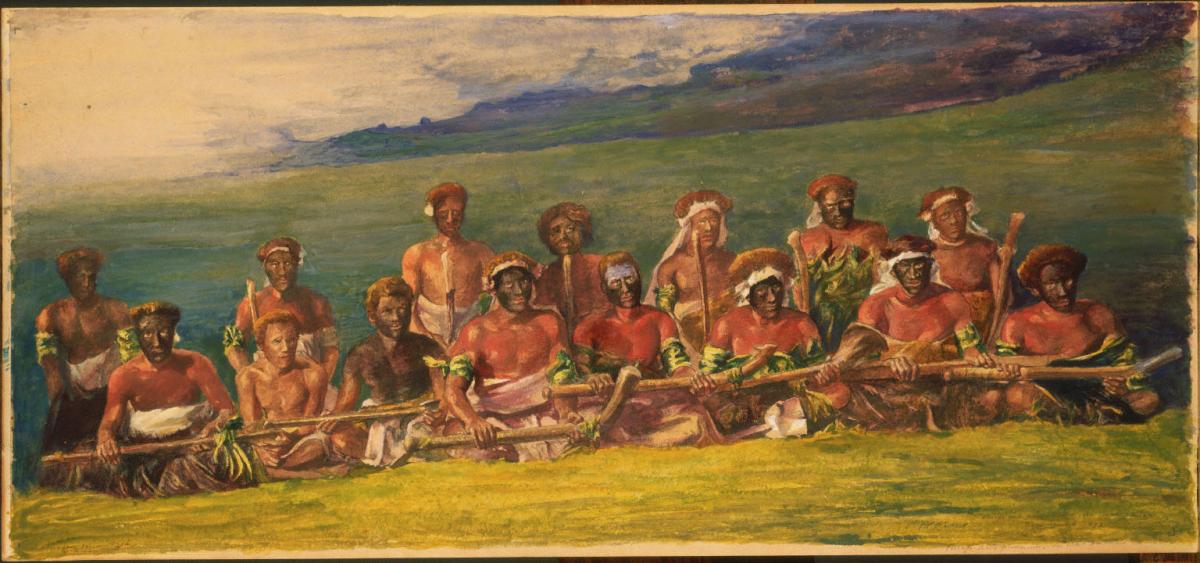Chiefs and Performers in War Dance, Fiji
John La Farge ( 1891 )

At the end of 1890, John La Farge embarked on a fourteen month expedition across the Pacific Ocean, stopping along the away at different islands, observing the cultures, the people, and the terrain. La Farge traveled with Henry Adams, a historian and novelist descendent from both President Adams. They were greatly inspired by the voyages of Captain James Cook and fancied themselves high-seas adventurers. During the course of La Farge’s travels, he kept many journals of what he saw, both in writing and in drawing, and executed many watercolors of his experiences.
La Farge and Adams arrived in Fiji on June 15, 1891. They spend approximately five weeks as the guests of Sir John Bates Thurston, British governor to Fiji, traveling across the island and visiting the indigenous tribes. The paintings he executed during his time in Fiji focused mostly on the island’s brutal history and deliberately excluded any Western influences; La Farge claimed he was trying to present an authentic portrait of life in Fiji, though he recorded in his journals his distasteful racism toward the native people.
Chiefs and Performers in War Dance, Fiji, was most likely depicting a meke-meke, a Fijian war dance, which La Farge attended on June 18 at the chief’s home. Another member of La Farge’s party, Captain Grenfell, took a photograph of the event, which was the basis of La Farge’s painting. As Adams recalled, the dancers “brandished their clubs and spears as though they still knew how to use them.” In the painting, La Farge put great emphasis on the colors of Fiji, as seen in the costumes and face paint the dancers wore, as well as the magnificent landscape itself. La Farge painted the “sensual appeal of color and light that he experienced in the tropics,” which was enhanced by the luminosity of watercolor paints. Though executed from a photograph, the painting glows with color and feels as if it was executed from life.